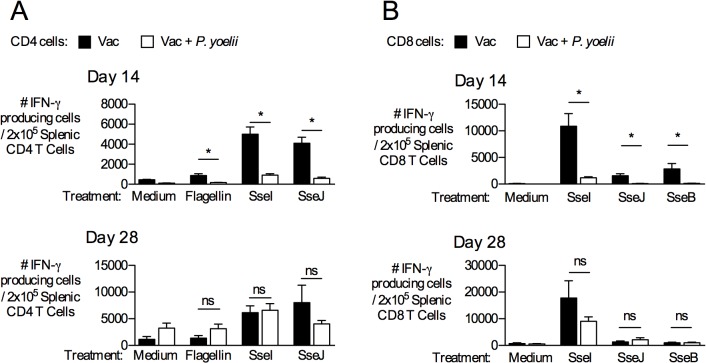Fig 2. IFN-γ-producing capability of Salmonella-specific CD4 and CD8 T cells is reduced during peak malaria-parasite infection upon ex vivo stimulation.
C57BL/6 mice were vaccinated with S. Typhimurium BRD509 (Vac). On day 42, these mice were inoculated with P. yoelii as described above. (A) At either 14 d (top) or 28 d post-malaria parasite infection (bottom), CD4 T cells were enriched from spleens of P. yoelii-infected or control mice. CD4 T cells were restimulated with Flagellin, SseI, or SseJ peptides (Table 1) in the presence of irradiated naïve splenocytes, and IFN-γ production was examined. Anti-CD3/anti-CD28 antibodies and no peptide (medium) wells constituted the positive and negative controls, respectively. Bar graphs show the number of IFN-γ-producing CD4 T cells per 2x105 CD4 T cells. (B) CD8 T cells were enriched from the spleens of the same mice, and stimulated with peptides corresponding to Class I epitopes from SseB, SseI and SseJ (Table 1). Data represent Mean+SEM of three independent experiments (n = 9). Significance of differences between groups was determined using a Student’s t test (*, p<0.05; ns, not significant).

